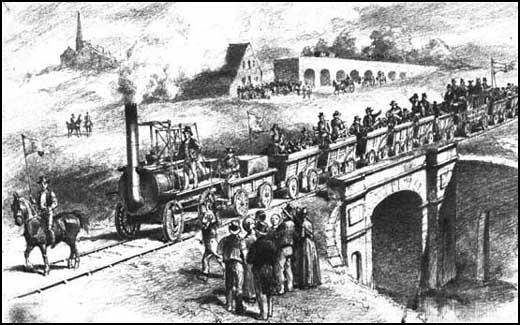The Experiment: Passenger Carriage
The Stockton & Darlington Railroad was opened on 27th September, 1825. Large crowds saw George Stephenson at the controls of the Locomotion as it pulled 36 wagons filled with sacks of coal and flour. The train also included a purpose built railway passenger coach called the Experiment. It cost £80 to make and looked very much like a stage coach carriage. The Experiment seated 18 passengers and as it had no springs it must have provided an uncomfortable ride.

For the first few years on the Stockton & Darlington, only the freight wagons were pulled by locomotives. The passenger coach, Experiment, was drawn by horses. It was built like an ordinary road coach except that it was double-ended so that the vehicle did not have to be turned for return journeys. It was very successful and five other passenger carriages were added by 1827.
Primary Sources
(1) Durham County Advertiser (1st October, 1825)
The hour of ten arrived before all was ready to start. About this time the locomotive engine, or steam horse, as it was more generally termed, gave note of preparation. The scene, on the moving of the engine, sets description at defiance. Astonishment was not confined to the human species, for the beasts of the field and the fowls of the air seemed to view with wonder and awe the machine, which now moved onward at a rate of 10 or 12 mph with a weight of not less than 80 tons attached to it.
The distance from Brussleton to Stockton is twenty and a half miles, the entire length from Witton Park Colliery, nearly 25 miles, being, we believe, the largest railway in the Kingdom. The whole population of the towns and villages within a few miles of the railway seem to have turned out, and we believe we speak within the limits of truth, when we say that not less than 40 or 50,000 persons were assembled to witness the proceedings of the day.
(2) John Sykes was one of those who witnessed the opening of the Stockton to Darlington Railroad.
The train of carriages was then attached to a locomotive engine, built by George Stephenson. Six wagons, laden with coals and flour; then an elegant covered coach, with the committee and other proprietors of the railway.
